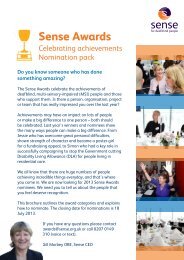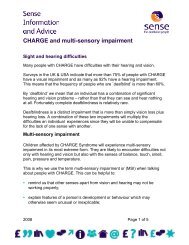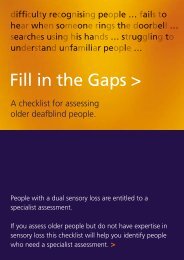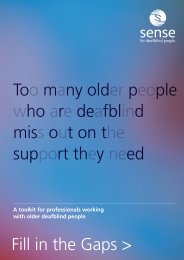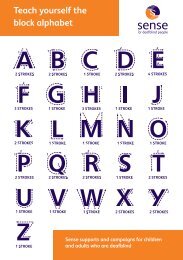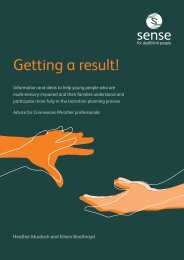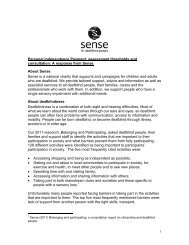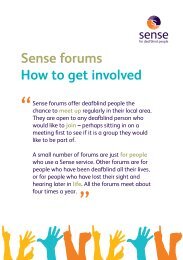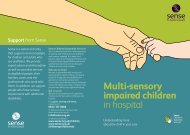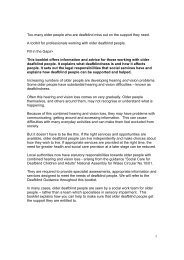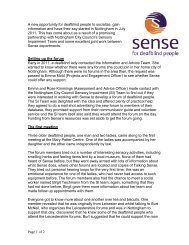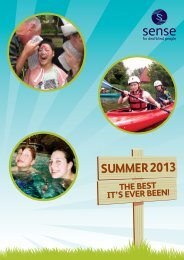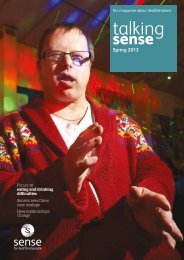MSI Unit Curriculum - Sense
MSI Unit Curriculum - Sense
MSI Unit Curriculum - Sense
You also want an ePaper? Increase the reach of your titles
YUMPU automatically turns print PDFs into web optimized ePapers that Google loves.
<strong>MSI</strong> <strong>Unit</strong> <strong>Curriculum</strong>: Phase 3Vocabulary is extended through an increasingly differentiated timetable – forexample, the names of utensils used in food technology and at snack time; thedifferent school areas used for science, food technology, PE etc.Increasingly detailed information is provided during activities – for example,a series of photos showing different stages of an activity, rather than a singlephoto, and/or a series of signs and gestures rather than a single sign. The aim isto give pupils the opportunity to talk about the activity (for instance, by pickingup the photo of the adult leading the session) rather than just to name theactivity.Pupils are routinely offered three or more options to choose from (choosingleisure activities; choosing where to go in mobility sessions, choosing theirfavourite activity of the day to share in collective worship etc.) Options arepresented in the form of photos, symbols, signs or words rather than real objects.The responsibility for identifying and interpreting contextual cues movesgradually from staff member to pupil.Simple stories with repetitive structures are used to encourage pupils toanticipate and join in with verbal sequences.Conceptual developmentPupils use a range of strategies to explore and manipulate objects, andunderstand the function of many familiar items.Their understanding of basic concepts is tied to familiar, practical activities.Their rote learning (for example, number sequences, song tunes, routes) maybe much better than their understanding.Pupils are offered objects with a range of properties for use in free or structuredexploration. New strategies for exploration are modelled by adults or peers.Pupils are encouraged to use an increasing range of actions on objects (directlyor using tools) to produce effects in activities such as art, food technology, musicand computer work.Very familiar daily activities such as greetings and collective worship aregradually extended to incorporate new concepts (such as identifying who hasand who hasn’t taken part in an activity).66



